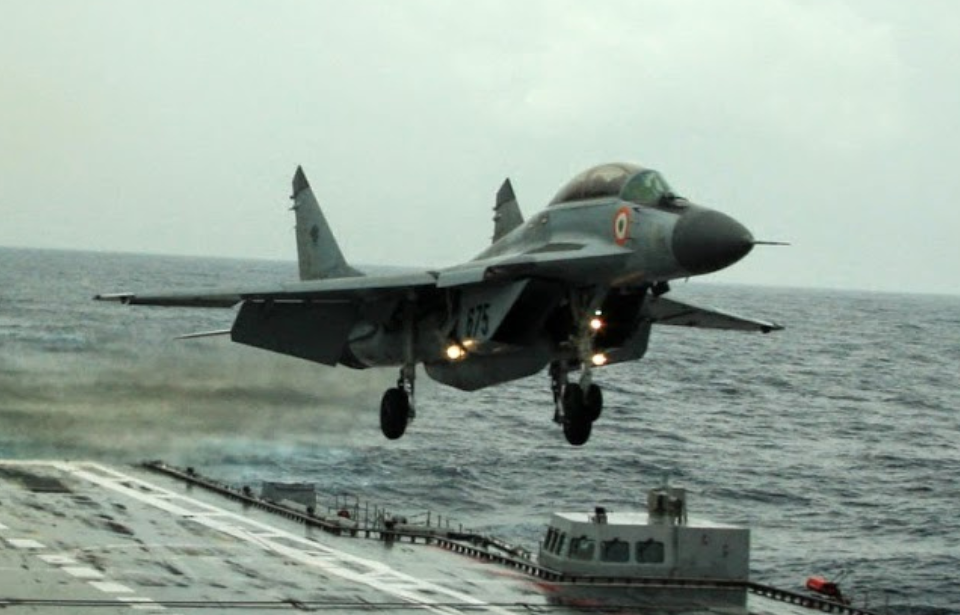The Mikoyan MiG-29K is a Russian all-weather carrier-based multirole fighter. Developed by the Mikoyan Design Bureau in the late 1980s, it was the naval variant of the Mikoyan MiG-29. The project was paused following the collapse of the Soviet Union, only to be revived in the early 2000s after the Indian Navy showed interest. The Russians also wound up adopting the aircraft, equipping it to this day.
Development of the Mikoyan MiG-29K
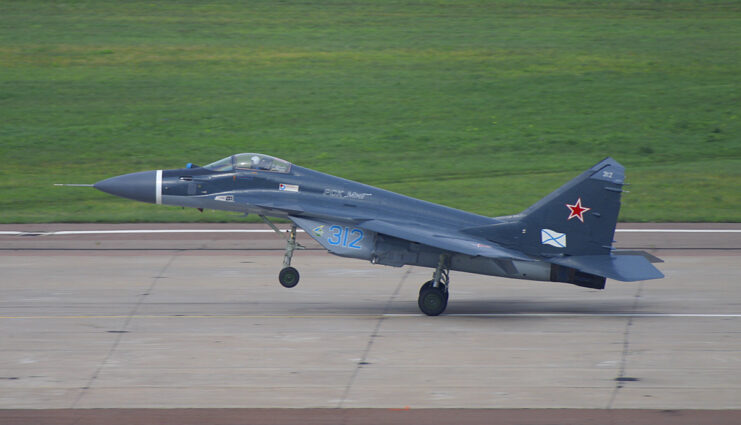
Development and testing of the MiG-29K occurred in response to the Soviet Union’s need for a carrier-based fighter aircraft. A naval version of the MiG-29 seemed promising, with the original aircraft having first flown in the late 1970s.
The design of the MiG-29K involved several modifications to make it suitable for carrier operations. The airframe was reinforced to withstand the stress of catapult launches and arrested landings. The wings and tail were also modified to allow them to fold for storage onboard Soviet aircraft carriers.
The MiG-29K’s first flight took place in July 1988. A series of tests followed, first on the ground, then from shore establishments. Carrier-based trials were conducted onboard the aircraft carrier Admiral Kuznetsov, then known as Tbilisi.
Temporarily put on pause
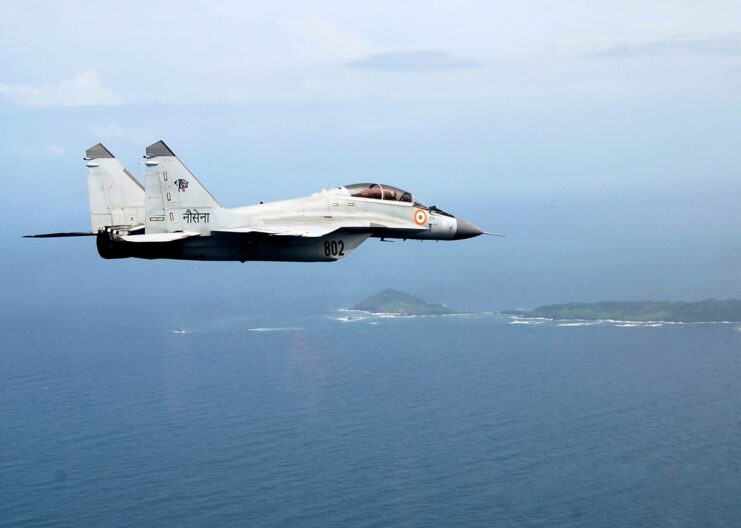
Development of the MiG-29K simultaneously occurred alongside that of the Sukhoi Su-27K (later designated Su-33), another carrier-based fighter being designed for the Soviet Navy.
With the collapse of the Soviet Union, Russia focused on the Su-33 and halted further development of the MiG-29K. Despite this, Mikoyan held onto the aircraft, which experienced a revival in 2004, following the Indian Navy’s acquisition of the former Soviet aircraft carrier Admiral Gorshkov. The service preferred the MiG-29K’s smaller size, compared to the larger Su-33.
Russian interest in the MiG-29K was based primarily on the cost-effectiveness of piggy-backing on the Indian Navy’s order, rather than ordering additional Su-33s.
Mikoyan MiG-29K specs
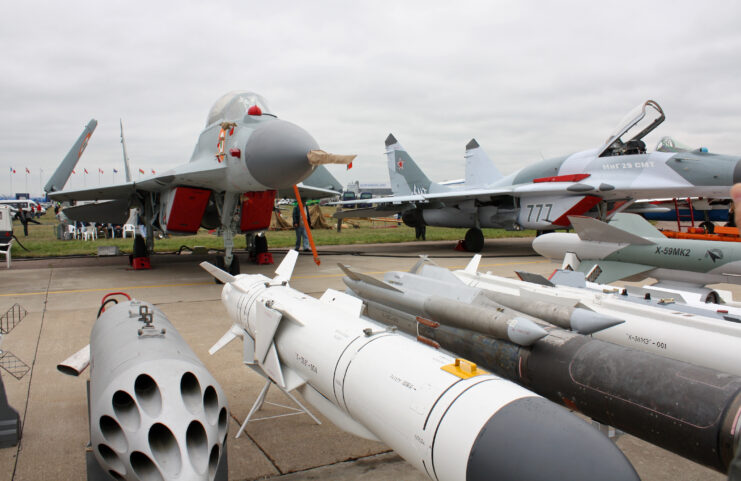
The MiG-29K’s design includes the aforementioned reinforced airframe and folding parts. The aircraft is powered by two Klimov RD-33MK turbofan engines, each capable of producing 19,000 pounds of thrust. They’re located toward the rear and are angled downward, to reduce the risk of ingesting foreign objects during takeoff and landing.
The cockpit has advanced avionics, including a Phazotron-NIIR Zhuk-M radar, an infrared search and track (IRST) system, a helmet-mounted target designator and a digital fly-by-wire control system.
The MiG-29K has a maximum speed of Mach 2+ and can operate at altitudes of up to 59,000 feet. It’s armed with a Gryazev-Shipunov GSh-30-1 cannon and can carry a variety of air-to-air missiles, air-to-surface missiles and bombs on its six external hardpoints. The MiG-29K also has an in-flight refueling capability, allowing it to extend its range and time on station.
Overall, the design of the MiG-29K represents a significant upgrade over the earlier models, with improvements in performance, avionics and carrier suitability. All these have garnered it the distinction of being a fourth-generation aircraft.
Service with the Indian Navy
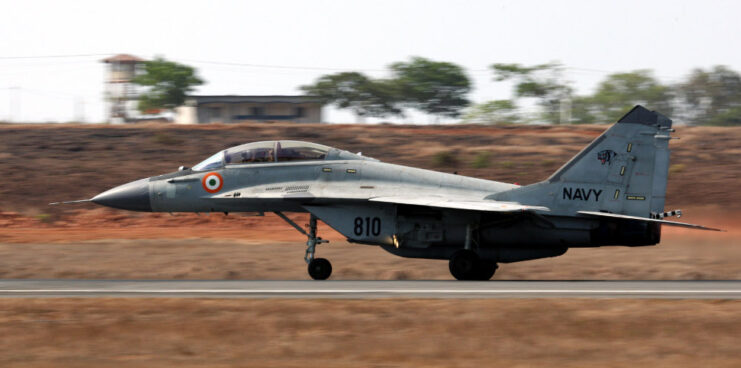
In 2004, the Indian Navy ordered 12 MiG-29K single-seaters and four MiG-29KUB two-seater variants. Delivery began in December 2009, with the aircraft entering service the following February.
The MiG-29K has faced some challenges during its service with the Indian Navy. Five crashed between 2011-22. On top of this, supply chain issues have saw the service experience problems acquiring parts. That being said, the aircraft remains an important part of the Indian Navy’s airpower, and it’s expected to continue to remain in this role for many years to come.
Service with the Russian Navy
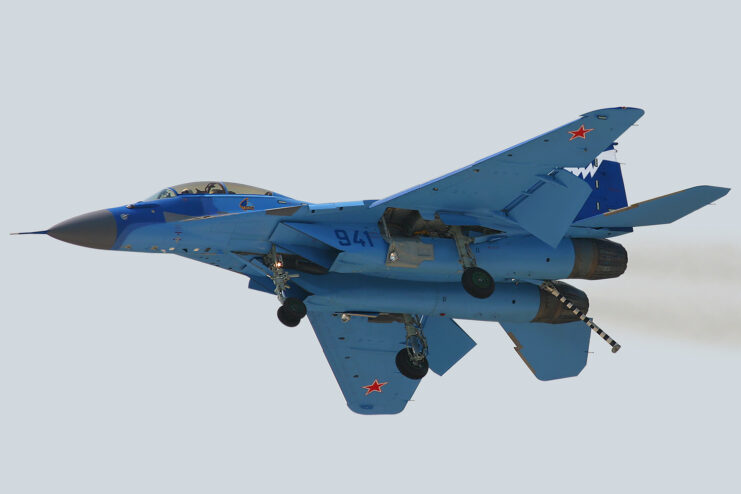
In 2009, the Russian Navy ordered 24 MiG-29Ks, a contract worth around $1 billion. Delivery began the following year, with the aircraft entering service in 2013. The service operates two variants – MiG-29KR and MiG-29KUBR – which are virtually identical to those being flown by the Indian Navy.
The MiG-29K has participated in various Russian naval operations, including those in Syria in 2016. Four were deployed to the region to conduct airstrikes against targets supporting Syrian government forces.
More from us: Saab J35 Draken: The Nordic Dragon That Accidentally Discovered the Cobra Maneuver
The Russian Navy continues to operate the MiG-29K and is projected to continue to fly this fourth-generation aircraft.
